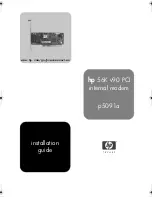
5.8.3 DSL Modem Status
The DSL Modem Status icon indicates whether Showtime is in effect
No Showtime
Showtime status achieved
5.8.4 Errors
Line and channel performance measurements include the following:
CRC:
Received CRC-8 code word does not match the code word transmitted. A count of the superframes that contained
CRC.
Forward Error Correction (FEC):
Count of near end Reed-Solomon forward error correction anomalies for the
interleaved or fast data streams.
Header Error Control (HEC):
Count of near end Header Error Control anomalies for the interleaved or fast data streams.
A CRC algorithm is used for checking and correcting an error in the ATM cell header. ATM equipment checks for an error
and if possible will correct it.
Errored Second (ES):
Count of 1-second intervals with one or more CRC-8 anomalies summed over all received
channels, one or more LOS defects, one or more SEF defects, or one or more LPR defects
Severely Errored Seconds (SES):
An Errored Second is any second containing one or more CRC anomaly, or one or
more Los(s) or Severely Errored Frame (self) defect(s)
Unavailable Seconds (UAS):
Count of 1-second intervals for which the xDSL line is unavailable. The xDSL line becomes
unavailable at the onset of 10 contiguous SES which are included in unavailable time. Once unavailable, the xDSL line
becomes available at the onset of 10 contiguous seconds with no SES. However these 10 seconds with no SES are
excluded from unavailable time
Retrain:
Press to resynchronize the modem.
Tap
Reset
to reset error counters.
On-line Reconfiguration (OLR)
During initial modem link up, a signal to noise measurement is made for each tone and the bit distribution is optimized to deliver the
desired bit rate. During showtime, modems constantly monitor the SNR/tone. On-line reconfiguration, specified in ITU-T G.992.3, allows
the DSL system to autonomously maintain operations within defined operation parameters. If changes in the line or environment
conditions occur (e.g. noise, interference, or cross talk), on-line reconfiguration processes adjust bit distribution and data rates to
optimize bandwidth.
Below are a few types of reconfiguration processes:
Bit Swapping:
Reallocates bits and transmission power among allowed sub-carriers without changing bit rate. If a tone
degrades in quality, a bit swap command re-allocates bits to another tone or removes them completely.
Seamless Rate Adaptation (SRA):
Reconfigures the total data rate by modifying the bits and gains, data frame parameters,
and DTU size without any service disruption or bit errors.
Fast Rate Adaptation (FRA):
Provides fast adaptation of the bit rate, which can be used to lessen unexpected SNR loss in
cases of abrupt changes in the channel.
MTTplus-_Test_Module
Page 33 of 44












































